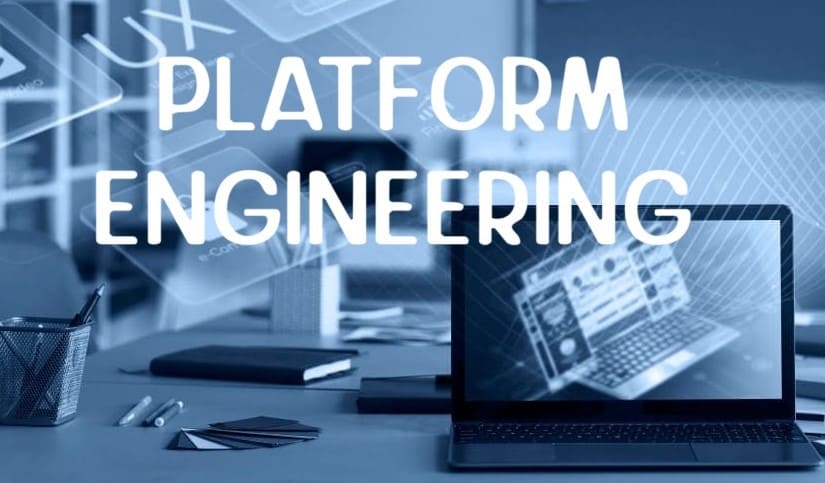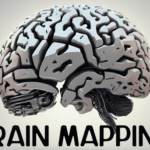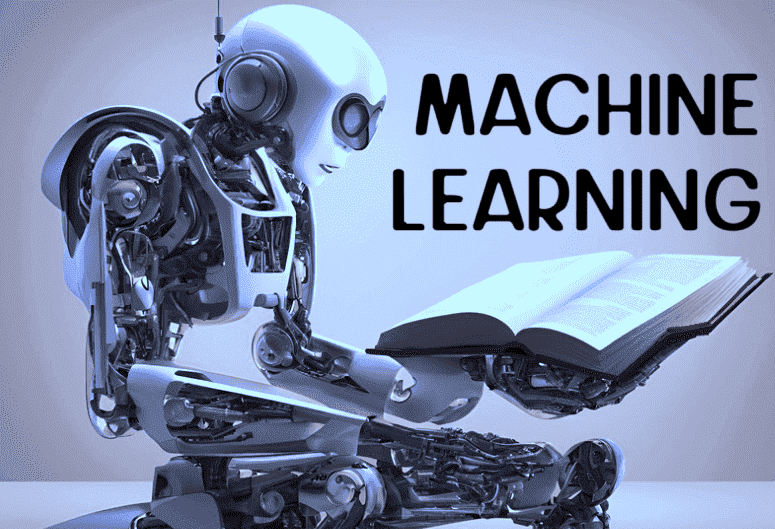
Overview:
In the rapidly evolving landscape of technology and business, platform engineering emerges as a pivotal discipline shaping the future of digital ecosystems. So, to understand what is platform engineering, we need to focus on designing, developing, and optimizing robust frameworks that support diverse applications, services, and interactions within and across organizations. These platforms serve as foundational infrastructure, enabling seamless integration of cutting-edge technologies like AI, quantum computing, and decentralized systems, thereby catalyzing innovation and driving competitive advantage in the global marketplace.
As businesses increasingly rely on interconnected platforms to streamline operations, enhance customer experiences, and leverage data-driven insights, the role of platform engineers becomes increasingly critical. Beyond mere technical proficiency, platform engineering demands foresight into emerging trends, a deep understanding of user needs, and a commitment to ethical standards and sustainability. This combination empowers platform engineers to craft scalable, secure, and adaptable solutions that not only meet current demands but also anticipate future challenges and opportunities on a global scale.
Contents:
- What is Platform Engineering
- Evolution of Platform Engineering
- Key technologies enabling Platform Engineering
- Explaining Platform Engineering using a simple example
- What are the key application areas of Platform Engineering
- Key benefits of Platform Engineering
- Key challenges with the Platform Engineering
- Futuristic outlook for Platform Engineering
- Summing Up
So, what is Platform Engineering:
Platform Engineering is about creating and maintaining the foundational infrastructure and tools that enable developers to build and run applications efficiently, securely, and reliably. It requires a deep understanding of both software development principles and system administration, along with expertise in various tools and technologies used in modern IT environments.
Evolution of Platform Engineering:
1. Early Years (Pre-2000s)
Mainframe Era:
Computing was centralized around mainframe computers.
Platform engineering focused on managing and optimizing mainframe environments for large-scale processing.
Client-Server Architecture:
Emergence of client-server architecture where applications were split between client-side and server-side components.
Platform engineering involved managing servers, databases, and network infrastructure to support distributed computing.
2. 2000s
Internet Boom and Web 2.0:
Rise of the internet and the advent of Web 2.0 brought about dynamic web applications.
Platform engineering expanded to include scalable web servers, load balancers, and database management systems for handling increasing web traffic.
Virtualization and Cloud Computing:
Virtualization technologies like VMware and Xen enabled better resource utilization and flexibility.
Cloud computing platforms (e.g., AWS, Azure) emerged, offering scalable infrastructure as a service (IaaS) and platform as a service (PaaS) solutions.
Platform engineering shifted towards designing and managing cloud-based architectures, utilizing automation tools for provisioning and scaling infrastructure.
3. 2010s
DevOps and Infrastructure as Code (IaC):
DevOps practices gained prominence, emphasizing collaboration between development and operations teams.
Infrastructure as Code (IaC) tools like Chef, Puppet, Ansible, and later Terraform enabled automated provisioning and configuration management of infrastructure.
Platform engineering focused on automation, continuous integration/continuous deployment (CI/CD) pipelines, and improving agility and reliability of deployments.
Microservices and Containerization:
Adoption of microservices architecture allowed applications to be broken down into smaller, loosely coupled services.
Containerization technologies like Docker gained popularity for packaging and deploying applications consistently across different environments.
Orchestration tools such as Kubernetes emerged to manage containerized applications at scale, revolutionizing platform engineering by enabling efficient resource utilization and deployment flexibility.
4. 2020s
Serverless Computing and Edge Computing:
Serverless computing models (e.g., AWS Lambda, Azure Functions) abstracted server management, focusing on code execution triggered by events.
Edge computing gained traction for processing data closer to the source (e.g., IoT devices), requiring platform engineering to design distributed, low-latency architectures.
AI/ML and Data-driven Platforms:
Integration of AI/ML into platforms for predictive analytics, personalized recommendations, and automation.
Platform engineering involved managing data pipelines, implementing scalable data storage solutions (e.g., NoSQL databases), and ensuring data security and privacy.
Focus on Security and Compliance:
Increasing emphasis on cybersecurity and compliance with regulations (e.g., GDPR, HIPAA) reshaped platform engineering practices.
Engineers integrated security best practices into infrastructure designs, implemented encryption, access controls, and conducted regular audits.
Hybrid and Multi-cloud Environments:
Organizations adopted hybrid and multi-cloud strategies to leverage different cloud providers and on-premises infrastructure.
Platform engineering evolved to manage diverse cloud environments, ensure seamless integration, and optimize workload placement based on performance and cost considerations.
5. Future Trends
Automation and AI-driven Operations:
Continued automation of infrastructure management tasks using AI-driven operations (AIOps) and machine learning.
Platform engineering will focus on predictive analytics, anomaly detection, and automated remediation of issues.
Blockchain and Distributed Ledger Technology (DLT):
Integration of blockchain and DLT for secure and transparent transactions, impacting platforms in finance, supply chain, and other sectors.
Platform engineering will adapt to manage decentralized architectures and ensure data integrity and privacy.
Green Computing and Sustainability:
Increasing focus on sustainability, driving platform engineering to optimize energy efficiency, reduce carbon footprint, and adopt eco-friendly practices in data centers and cloud services.
Key Technologies Enabling Platform Engineering:
1. Cloud Platforms (AWS, Azure, Google Cloud):
Infrastructure as Code (IaC) tools like Terraform, CloudFormation, and ARM Templates automate the provisioning and management of cloud resources.
Serverless Computing platforms such as AWS Lambda, Azure Functions, and Google Cloud Functions enable running code without provisioning or managing servers, enhancing scalability and cost efficiency.
2. Containerization and Orchestration:
Docker and container runtimes allow packaging applications and their dependencies into containers for easy deployment and scalability.
Kubernetes and Docker Swarm orchestrate containerized applications, manage clusters, and automate scaling and management tasks.
3. Configuration Management:
Ansible, Chef, and Puppet automate the configuration and management of servers and infrastructure components, ensuring consistency and repeatability.
4. Monitoring and Logging:
Prometheus, Grafana, ELK Stack (Elasticsearch, Logstash, Kibana), and Splunk provide monitoring, alerting, and logging capabilities to track application performance, troubleshoot issues, and ensure system reliability.
5. Continuous Integration/Continuous Deployment (CI/CD):
Jenkins, CircleCI, GitLab CI/CD, and GitHub Actions automate the build, test, and deployment processes, ensuring rapid and reliable delivery of application changes.
6. Microservices Architecture:
Service mesh technologies like Istio and Linkerd provide features such as traffic management, security, and observability for microservices-based applications.
API gateways (e.g., NGINX, Kong) manage and secure APIs, handling traffic between clients and services.
7. Security Tools and Practices:
HashiCorp Vault manages secrets and sensitive data, ensuring secure access control and encryption.
Security scanning tools (e.g., Tenable, Qualys, Nessus) and vulnerability management platforms identify and mitigate security risks across infrastructure and applications.
8. Database Technologies:
Relational databases (e.g., MySQL, PostgreSQL) and NoSQL databases (e.g., MongoDB, Redis) store and manage data, providing scalability and high availability options.
9. Networking and Load Balancing:
Virtual Private Clouds (VPCs) and network security groups (NSGs) provide network isolation and security controls within cloud environments.
Load balancers (e.g., AWS ELB/ALB, NGINX, HAProxy) distribute incoming application traffic across multiple targets to ensure high availability and reliability.
10. Collaboration and Documentation:
Wiki platforms (e.g., Confluence, MediaWiki) and version control systems (e.g., Git, SVN) facilitate collaboration, documentation, and knowledge sharing among platform engineering teams.
Now, let’s break down Platform Engineering using a simple example:
Example: Building a Platform for Online Payments
Imagine you’re tasked with building a platform that facilitates online payments for a small e-commerce website. Here’s how platform engineering concepts would apply:
1. Identifying Requirements:
You start by understanding what the platform needs to do:
- Handle payments securely.
- Support different payment methods (credit cards, PayPal, etc.).
- Scale with increasing transactions.
2. Designing the Platform:
Architecture: You decide on a microservices architecture where each service handles a specific function (payment processing, transaction logging, user authentication).
Components: You design components such as a payment gateway service, a database for transactions, and an API for integration with the e-commerce site.
3. Implementation:
Developing Services: You write code for each service using appropriate technologies (Java for backend, React for frontend).
Integration: Services are integrated using REST APIs or message queues for communication.
Security: Implement encryption (SSL/TLS) for secure data transfer and follow PCI DSS standards for handling payment information.
4. Testing and Deployment:
Testing: Perform unit tests for each service and integration tests for the entire platform.
Deployment: Use containers (Docker) and orchestration tools (Kubernetes) for deployment in a scalable and resilient manner.
5. Monitoring and Maintenance:
Monitoring: Set up monitoring tools (Prometheus, Grafana) to track performance metrics (response times, error rates).
Maintenance: Regularly update libraries and frameworks, handle security patches, and optimize performance.
6. Scaling:
Horizontal Scaling: Add more instances of services to handle increased traffic.
Vertical Scaling: Upgrade hardware resources (CPU, RAM) for services that require more processing power.
What are the Key Application Areas of Platform Engineering:
1. Internet of Things (IoT) Platforms:
- Platform engineering is vital for building scalable and secure IoT platforms that connect devices, collect data, and enable real-time analytics and control. Engineers design and manage the infrastructure, communication protocols, and data processing pipelines to ensure IoT systems operate smoothly and securely.
2. Healthcare Platforms:
- In healthcare, platform engineering supports electronic health records (EHR), telemedicine platforms, medical imaging systems, and patient management solutions. Engineers focus on compliance with healthcare regulations (e.g., HIPAA), data security, interoperability, and real-time data processing to support critical healthcare workflows.
3. Financial Technology (FinTech) Platforms:
- FinTech platforms encompass banking applications, payment gateways, trading platforms, and financial analytics tools. Platform engineers ensure the security of financial transactions, compliance with financial regulations (e.g., PCI-DSS, GDPR), and high availability to handle fluctuating transaction volumes.
4. E-learning and EdTech Platforms:
- Platform engineering supports e-learning platforms, virtual classrooms, and educational content management systems. Engineers focus on scalability to accommodate growing user bases, real-time collaboration tools, data analytics for personalized learning experiences, and integrations with learning management systems (LMS).
5. Media and Entertainment Platforms:
- Streaming platforms (e.g., Netflix, Spotify), gaming platforms, digital content distribution networks, and social media networks rely on platform engineering. Engineers manage content delivery networks (CDNs), ensure low latency streaming, handle user-generated content, and scale infrastructure to handle peak traffic during live events.
6. Retail and E-commerce Platforms:
- E-commerce platforms, online marketplaces, and retail analytics platforms benefit from platform engineering. Engineers focus on high availability during peak shopping seasons, personalized customer experiences through data analytics, secure payment processing, and integration with third-party logistics (3PL) providers.
7. Automotive and Transportation Platforms:
- Automotive platforms involve connected vehicles, fleet management systems, and transportation logistics platforms. Engineers design robust communication networks (e.g., V2X communication), manage vehicle data processing pipelines, ensure data security and privacy, and enable predictive maintenance and autonomous driving capabilities.
8. Energy and Utilities Platforms:
- Platform engineering supports smart grid systems, energy management platforms, and utility monitoring solutions. Engineers focus on real-time data analytics for energy consumption, integration with IoT devices (e.g., smart meters), grid stability, cybersecurity for critical infrastructure, and compliance with energy regulations.
9. Government and Public Sector Platforms:
- Government platforms include citizen portals, digital identity systems, and public safety platforms. Engineers ensure data security, scalability for citizen services, interoperability between government agencies, compliance with government regulations (e.g., GDPR, ADA), and accessibility for diverse user groups.
10. Supply Chain and Logistics Platforms:
- Platform engineering supports supply chain visibility platforms, warehouse management systems (WMS), and logistics optimization solutions. Engineers focus on real-time tracking of shipments, predictive analytics for demand forecasting, integration with IoT sensors (e.g., RFID), and secure data exchange between supply chain partners.
Key Benefits of Platform Engineering:
1. Modularity and Scalability:
- By adopting a microservices architecture, platform engineering enables modularity where different components or services can be developed, deployed, and scaled independently. This modularity allows for easier maintenance, updates, and the ability to scale specific services as needed without affecting the entire system.
2. Flexibility and Adaptability:
- Platforms engineered with flexibility in mind can easily integrate new technologies, features, or third-party services. This adaptability is crucial in rapidly changing business environments where requirements may evolve over time.
3. Efficiency and Speed:
- Well-designed platforms streamline development processes through reusable components, standardized interfaces (APIs), and automation. This efficiency accelerates time-to-market for new features and reduces the overhead of managing complex systems.
4. Resilience and Reliability:
- Platform engineering emphasizes building resilient systems that can handle failures gracefully and maintain high availability. Techniques such as redundancy, load balancing, and fault-tolerant design ensure that services remain operational even during unexpected disruptions.
5. Security and Compliance:
- Security is a fundamental aspect of platform engineering. Platforms are engineered with security best practices, including data encryption, authentication mechanisms, and compliance with regulatory standards (such as GDPR, PCI DSS). This ensures the protection of sensitive data and builds trust with users.
6. Scalability and Performance:
- Platforms engineered for scalability can handle increased workloads efficiently. Horizontal scaling (adding more instances) and vertical scaling (increasing resources) are facilitated by design choices such as containerization (e.g., Docker) and orchestration tools (e.g., Kubernetes), ensuring optimal performance under varying traffic conditions.
7. Monitoring and Optimization:
- Platform engineering includes robust monitoring and analytics capabilities to track system performance, detect bottlenecks or anomalies, and optimize resource utilization. Continuous monitoring allows for proactive maintenance and improvements, enhancing overall system health and user experience.
8. Collaboration and Innovation:
- A well-engineered platform fosters collaboration among development teams by providing standardized tools, workflows, and documentation. This collaboration encourages innovation as teams focus more on creating value-added features rather than managing infrastructure complexities.
Key Challenges with the Platform Engineering:
1. Complexity Management:
- Handling the intricacies of interconnected microservices, dependencies, and evolving business logic can lead to increased complexity in design, deployment, and maintenance.
2. Integration and Interoperability:
- Ensuring seamless communication and compatibility between different services, APIs, and data formats, especially during updates and migrations, can be complex.
3. DevOps and Automation:
- Implementing and maintaining robust automation pipelines, CI/CD processes, and infrastructure management practices across diverse technologies and environments is crucial but challenging.
4. Vendor Management and Technology Choices:
- Evaluating, selecting, and managing third-party services, cloud providers, and technology stacks while avoiding vendor lock-in requires careful consideration and planning.
5. Organizational Alignment and Cultural Shifts:
- Aligning teams, departments, and stakeholders around platform engineering goals, methodologies (e.g., Agile, DevOps), and continuous improvement practices can be a significant cultural challenge.
6. Cost Optimization:
- Balancing infrastructure costs, licensing fees, and operational expenses with performance requirements and growth projections requires continuous optimization and cost management strategies.
7. Resilience and Disaster Recovery:
- Ensuring high availability, fault tolerance, and disaster recovery capabilities across distributed systems and geographies is essential but complex to implement and maintain.
8. Legacy System Integration:
- Integrating with and modernizing legacy systems to align with new platform architectures and technologies while maintaining functionality and data integrity presents integration challenges.
9. Skill Gaps and Talent Acquisition:
- Navigating skill gaps in emerging technologies, hiring and retaining qualified platform engineers, and fostering continuous learning and development within teams are ongoing challenges.
Futuristic Outlook for Platform Engineering:
1. AI-Driven Automation:
- Platforms will extensively utilize AI and machine learning algorithms to automate decision-making, optimize resource allocation, and enhance user experiences. AI will enable predictive analytics, personalized recommendations, and autonomous operations across platforms.
2. Quantum Computing Integration:
- As quantum computing matures, platform engineering will explore its potential for solving complex computational problems at unprecedented speeds. Quantum-safe encryption and quantum-inspired algorithms will become integral to secure and efficient platforms.
3. Decentralized Autonomous Platforms:
- Platforms will evolve towards decentralized autonomous organizations (DAOs) powered by blockchain and smart contracts. These platforms will enable transparent governance, automated transactions, and trustless interactions between users and stakeholders.
4. Extended Reality (XR) Platforms:
- XR platforms combining virtual reality (VR), augmented reality (AR), and mixed reality (MR) will revolutionize user interfaces and immersive experiences. Platform engineers will develop robust infrastructure to support real-time XR applications across industries.
5. Bioinformatics and Health Platforms:
- Platform engineering will advance in bioinformatics and health tech, leveraging big data analytics, genomics, and personalized medicine. Platforms will integrate with wearable devices, IoT sensors, and AI-driven diagnostics to enhance healthcare delivery and research.
6. Ethical AI and Trustworthy Platforms:
- With increasing concerns over AI ethics and data privacy, platform engineering will prioritize ethical AI frameworks, transparent algorithms, and privacy-preserving technologies. Trustworthy platforms will build user confidence through responsible data stewardship.
7. Global Ecosystem Integration:
- Platforms will facilitate seamless integration within global ecosystems, connecting diverse stakeholders, supply chains, and smart cities. Interoperable APIs, federated learning, and cross-border data governance will enable collaborative innovation on a global scale.
8. Regenerative and Sustainable Platforms:
- Platform engineering will embrace regenerative practices, focusing on sustainability, circular economy principles, and reducing carbon footprints. Green computing initiatives, energy-efficient data centers, and eco-friendly technologies will drive sustainable platform development.
9. Neurotech and Brain-Computer Interfaces:
- Emerging neurotech platforms will integrate brain-computer interfaces (BCIs) and neural implants, enabling direct interaction between the human brain and digital systems. Platform engineers will design secure and responsive interfaces for neuroprosthetics and cognitive enhancement.
10. Interplanetary and Space Platforms:
- As humanity expands into space, platform engineering will pioneer interplanetary communication networks, space-based computing infrastructure, and autonomous space platforms. These platforms will support space exploration, resource utilization, and sustainable colonization efforts.
11. Holistic Digital Twins and Cyber-Physical Systems:
- Advanced digital twins and cyber-physical systems will simulate and optimize real-world environments in real-time. Platform engineers will develop interconnected platforms that integrate IoT devices, AI models, and feedback loops for predictive maintenance, smart cities, and Industry 4.0 applications.
12. Biometric Identity Platforms:
- Future platforms will integrate biometric authentication and identity management solutions, ensuring secure and frictionless interactions across digital ecosystems. Biometric data privacy and ethical usage will be paramount in designing trustworthy identity platforms.
Summing Up:
Platform engineering is at the forefront of a transformative era, where technological innovation converges with global challenges and societal needs. As AI-driven automation and quantum computing become mainstream, platforms are evolving into dynamic ecosystems capable of autonomous decision-making and predictive analytics. These advancements are not only revolutionizing industries such as healthcare, finance, and logistics but also setting new standards for efficiency, sustainability, and ethical governance.
Moreover, platforms of the future will integrate extended reality (XR), biometric identity solutions, and space technologies, fostering seamless global connectivity and driving innovation across diverse domains. Ethical considerations, including privacy protection and responsible AI deployment, are integral to building trustworthy platforms that enhance user trust and support sustainable growth. As platform engineering continues to evolve, its role in shaping a resilient and interconnected world, where collaboration and innovation thrive, is paramount in driving positive impact and empowering societies worldwide.
Courtesy Image: FreePik











